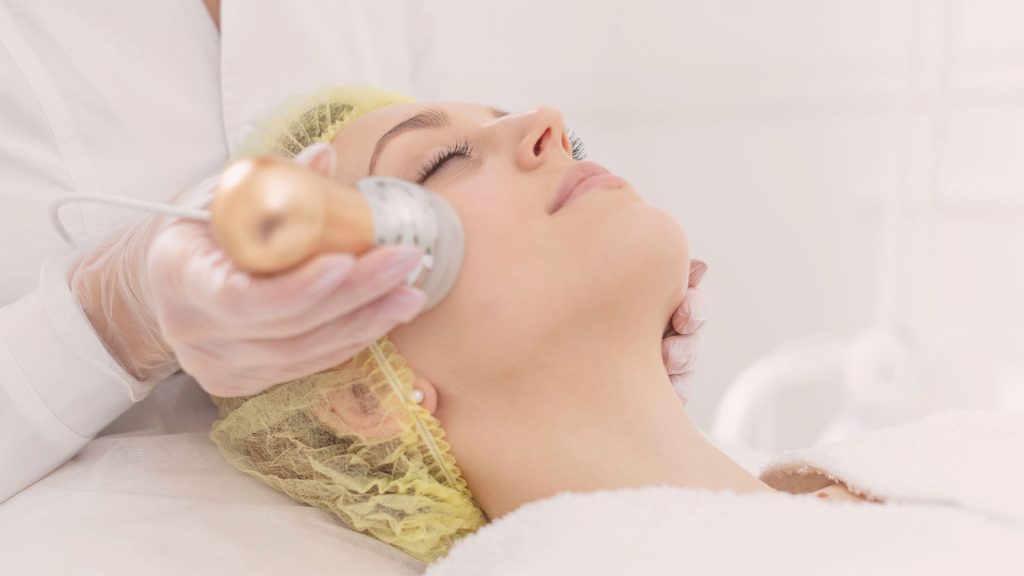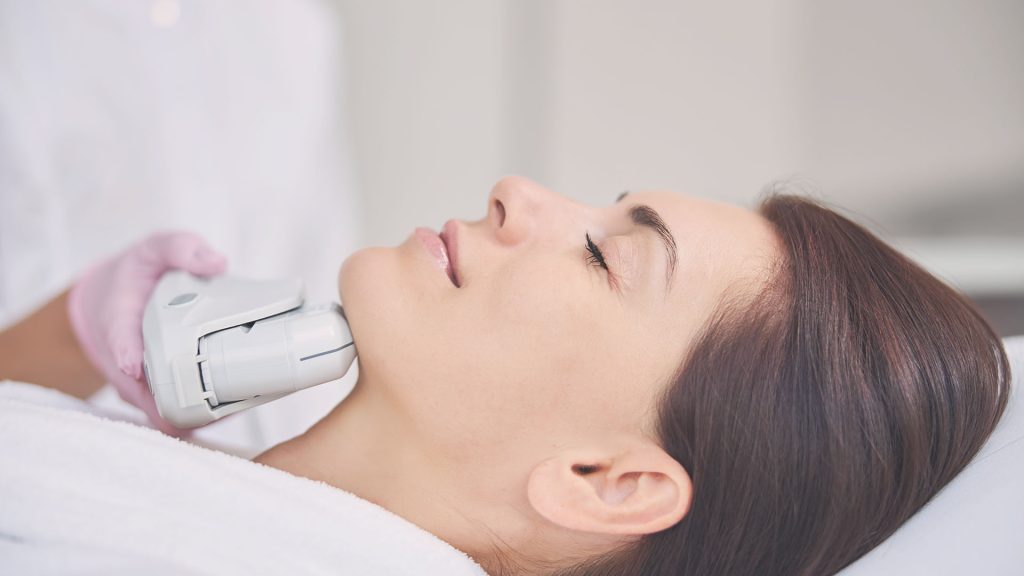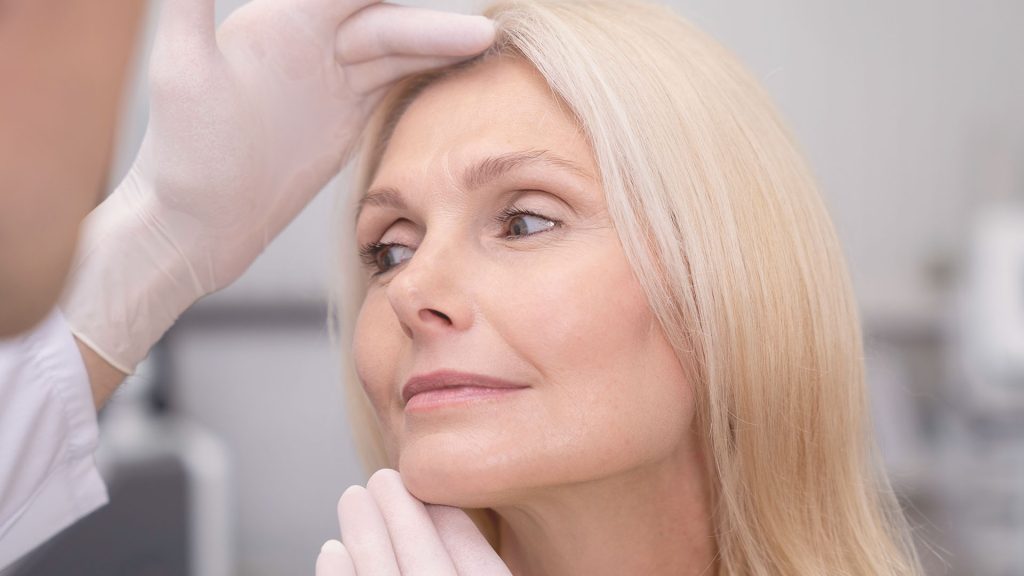Skin Tightening Without Surgery: RF and Ultrasound Compared
 Skin Rejuvenation
Skin RejuvenationTable of contents
Jump to any section
As we get older, our skin naturally starts to change. It may not feel as firm as it used to, and you might notice a little sagging or a softer jawline. This happens because our skin slowly produces less collagen and elastin, the proteins that keep it smooth, tight, and bouncy. Sun exposure, stress, and daily habits can make these changes show up even faster.
The good news? You don’t need surgery to get firmer, more youthful-looking skin. Modern treatments like Radio Frequency (RF) and Ultrasound skin tightening are becoming popular for a reason, they work deep under the surface to wake up your skin’s natural repair process, without cuts, needles, or long recovery times.
That’s why we are here to break down the science behind RF and Ultrasound skin tightening, and we will explain how they actually work, and why they’re a great choice if you want to refresh your skin and bring back that healthy, lifted look.
Why Skin Loses Its Firmness Over Time
Our skin is made up of many layers, but two key players keep it looking firm and youthful – Collagen and Elastin. Collagen gives the skin structure and strength, while elastin helps it bounce back into place after moving or stretching. Together, they’re like the skin’s natural support system.
But, as we age, our bodies produce less of these proteins. The existing collagen fibres also start to break down which makes skin thinner, weaker, and less able to hold its shape. That’s when we begin to see signs like fine lines, sagging cheeks, or a less defined jawline.
While the decline of collagen and elastin is a normal process, some things can speed it up dramatically.
- Excessive Sun Exposure: Unprotected exposure to the sun is the number one cause of premature skin ageing. The sun’s ultraviolet radiation directly attacks and degrades collagen and elastin fibres, thereby breaking them at a much faster rate than would happen naturally.
- Lifestyle Choices: Smoking and unhealthy eating habits are other contributors that abuse your skin. Smoking, by constriction of the blood vessels, reduces the supply of oxygen and nutrients reaching your skin, whereas a diet that lacks requisite vitamins would impair the skin proteins from being produced.
- Genetics: Your genes also play a big role in how your skin ages. Some people are naturally predisposed to losing collagen and elastin faster than others, which is why some individuals show signs of aging earlier than their peers.
What is RF Skin Tightening?

RF skin tightening is short for Radio Frequency skin tightening. It is a non-surgical way to help skin look firmer and smoother. It works by sending controlled heat deep into the skin’s layers. This gentle heat doesn’t harm the surface, but it does something important underneath – it wakes up the cells that make collagen and elastin.
Here’s How It Works:
- RF energy delivers controlled heat deep into the skin layers.
- The heat stimulates the fibroblasts, the cells in your skin that produce collagen and elastin.
- Over time, your skin rebuilds its support structure and eventually becomes firmer and lifted.
When fibroblasts are stimulated, they start making fresh collagen and elastin, two essential proteins that keep skin strong and bouncy. This process happens gradually, so results look natural and continue improving for weeks after the treatment.
Where It Can Be Used
Because it can reach these deeper layers, Ultrasound skin tightening is particularly effective for:
- Lifting the brows and eyelids
- Tightening the jawline and neck
- Improving the appearance of fine lines and wrinkles on the chest
What is Ultrasound Skin Tightening?

Ultrasound skin tightening, commonly referred to as HIFU (High-Intensity Focused Ultrasound), is a non-surgical procedure that uses focused sound waves to lift and tighten the skin. It goes much deeper than the surface of the skin and targets the same facial and neck layers as cosmetic surgery – without any cuts or downtime.
Here’s How It Works
- Focused ultrasound energy reaches deep into the skin’s foundational layers.
- The surface of the skin remains untouched, so there’s no visible damage.
- The energy creates precise points of heat in these deeper tissues.
These heated points trigger the body’s natural healing process. In response, the skin produces more collagen (the protein responsible for structure and firmness). Over the next few months, this new collagen tightens and lifts the treated area for a refreshed, youthful look.
Where It Can Be Used
This ability to target deeper layers makes HIFU a go-to for several key areas:
- Brow Lift: Lifts and tightens the skin around the eyebrows, resulting in an open and awake appearance.
- Jawline: Defines and sculpts the jawline to clinically improve and diminish jowls.
- Décolletage: Smooths wrinkles and crepey skin appearance on the chest.
- Neck: Firms and tightens loose skin creating a more elegant profile.
RF vs Ultrasound – Key Differences
Although, both Radio Frequency (RF) and Ultrasound (HIFU) skin tightening work to stimulate collagen and improve firmness, they do it in slightly different ways.
| Feature | RF Skin Tightening | Ultrasound Skin Tightening (HIFU) |
| How It Works | Uses radio frequency waves to gently heat the mid-to-deep skin layers. | Uses focused sound waves to reach deep skin and muscle layers without harming the surface. |
| Depth of Treatment | Targets collagen production closer to the skin’s surface. | Penetrates deeper, reaching layers usually targeted in surgical lifts. |
| Speed of Results | Some visible improvement soon after treatment, with gradual results over months. | Results appear more slowly, usually 2–3 months after as collagen rebuilds. |
| Comfort Level | Warm and gentle, often described as relaxing. | Can feel more intense in certain spots, but discomfort is brief. |
| Best For | Mild to moderate skin laxity, improving skin texture and tone. | Deeper lifting, especially for jawline, neck, and brow area. |
| Maintenance | Often done as a series of sessions with maintenance every few months. | Usually one session with follow-up once a year or as advised. |
How to Know Which Treatment is Right for You
Picking between RF and Ultrasound skin tightening isn’t about which one is “better”, it’s more about which one fits your skin and your goals.
If your main concern is mild sagging or you want an overall boost in skin texture then RF is often a great choice. It’s gentle, comfortable, and works well for regular upkeep.
However, if you’re dealing with deeper laxity, like a softer jawline, drooping brows, or loose skin on the neck, Ultrasound (HIFU) can target those deeper layers for a more noticeable lift.
It eventually also comes down to your personal preference. Some people like the gradual, build-up results of RF, while others prefer the longer gap between sessions that Ultrasound offers.
The easiest way to know for sure is to have a face-to-face chat with a skin expert. At Amara Aesthetic Studio, our experts will look at your skin, listen to what you want to achieve, and guide you toward the option that’s most likely to give you the results you’re after.
Book Your Consultation at Amara

Both RF and Ultrasound skin tightening are science-based, result-driven methods to help rejuvenate your skin. These methods work by stimulating your skins own collagen and elastin, working with your body to restore firmness, smoothness, and definition in a natural looking way, as time goes by. Whether you want a subtle refresh or a deeper lift, these safe non-surgical options are both proven and suitable for a variety of needs.
If you’re trying to figure out what your best option is, the best first step is with a consultation. At Amara Aesthetic Studio, our specialists will consider you and your goals before making a recommendation. With the right pathway you can have tighter, healthier looking skin without surgery or downtime.
Your skin’s best days don’t have to be behind you, book a consultation today at Amara and let us show you how advanced skin tightening technology can reveal a firmer, more youthful you.
Frequently Asked Questions – Skin Tightening without Surgery
Most people find RF very comfortable, with just a gentle warming sensation. Ultrasound can feel a little stronger in some areas, but it’s usually well tolerated and doesn’t last long.
With RF, you may notice some improvement right away, but the best results show up gradually over a few months. Ultrasound takes a bit longer – usually 2 to 3 months, as new collagen builds up.
Results vary by person, but typically RF results last several months with maintenance sessions, while Ultrasound can last up to a year or more.
Anyone noticing mild to moderate sagging, fine lines, or loss of firmness is usually a good candidate. A consultation helps confirm the best option for your skin.
They can’t fully replace surgical results, but they’re great for people who want noticeable tightening and lifting without surgery.
